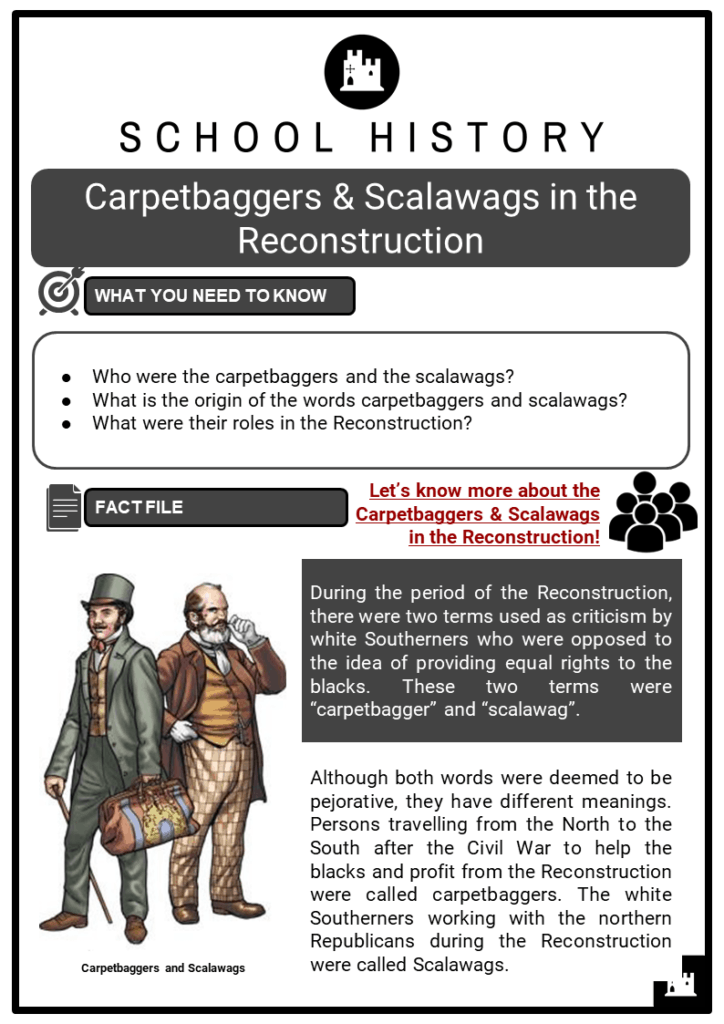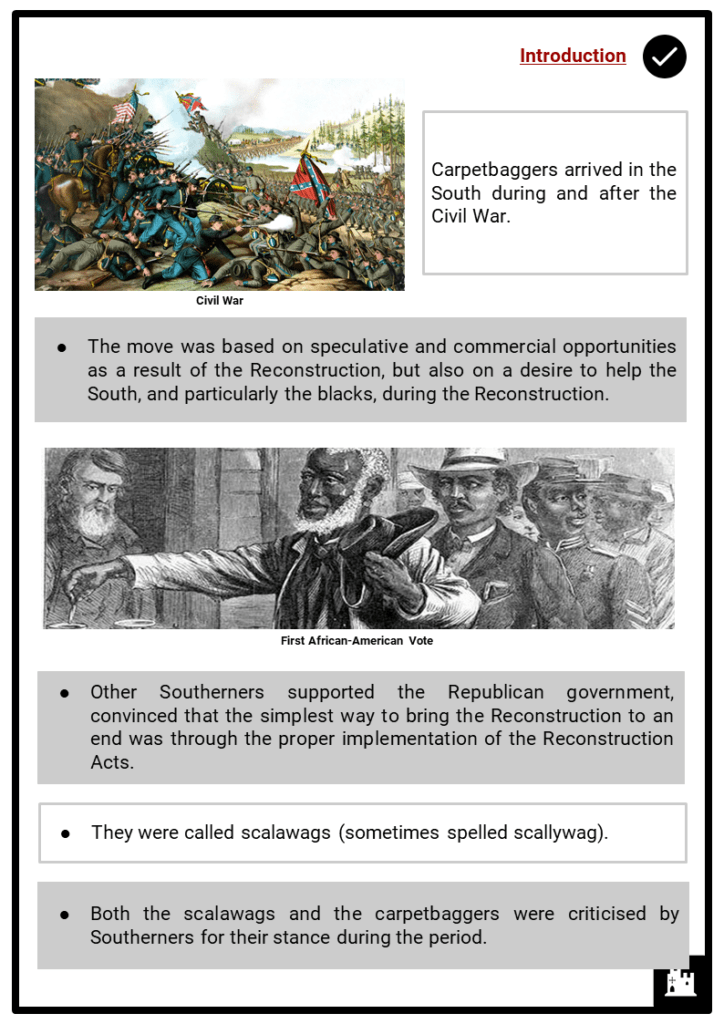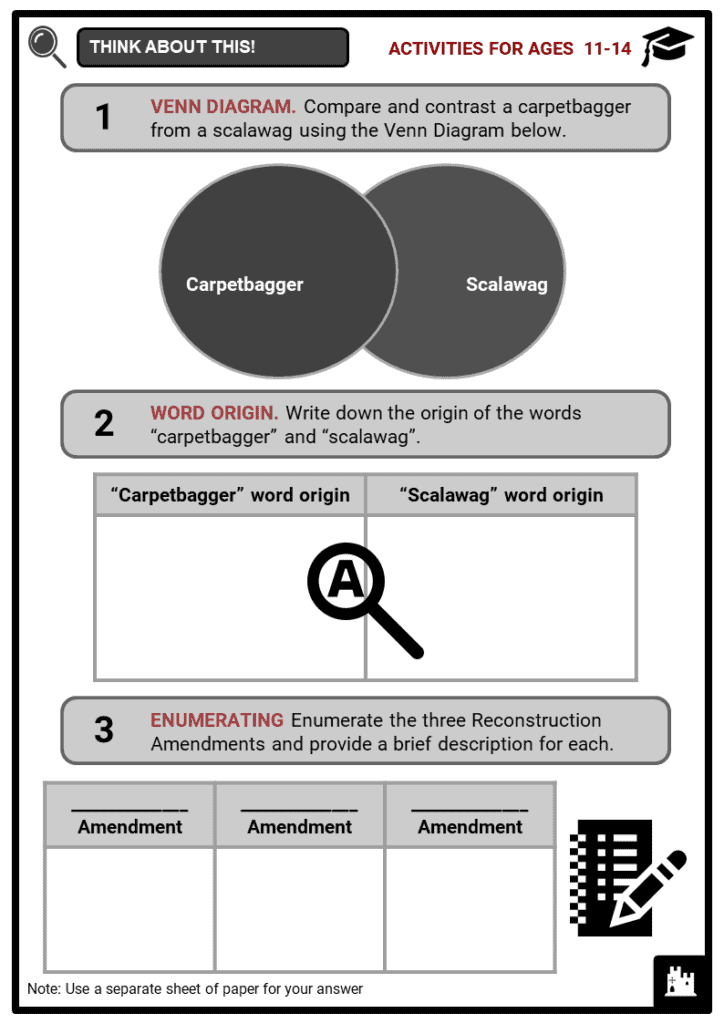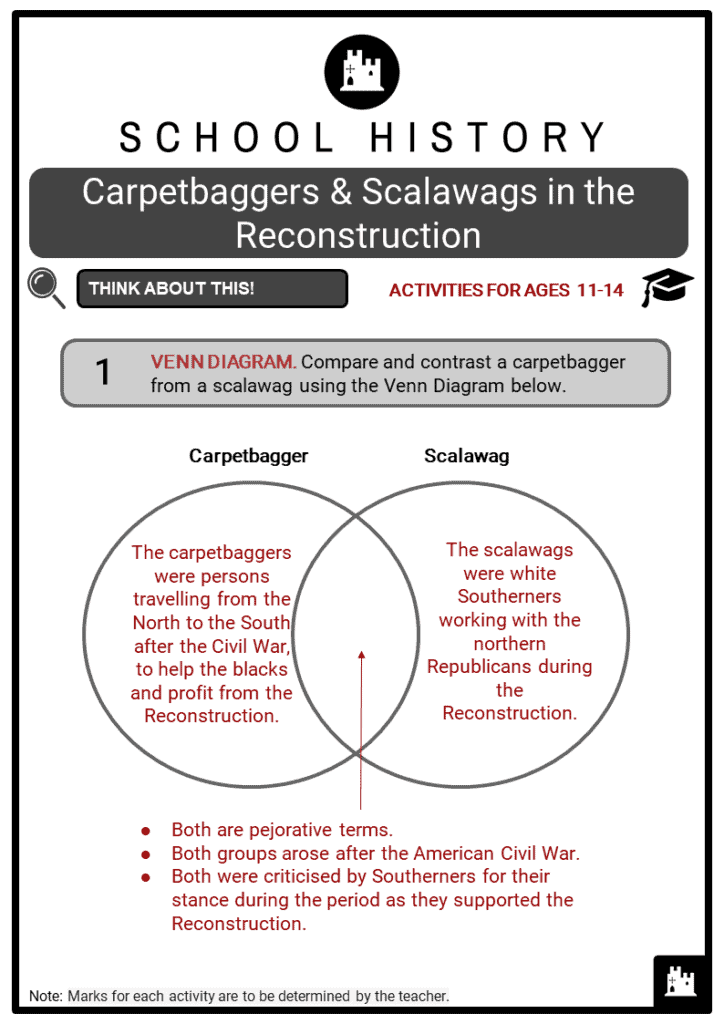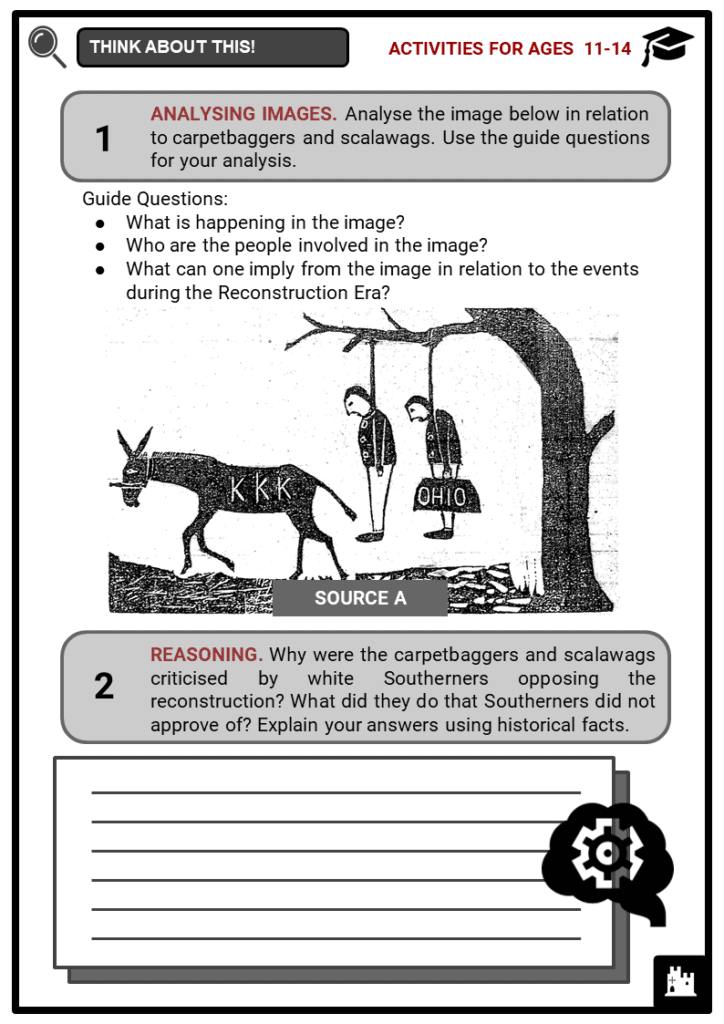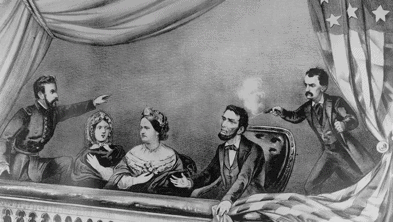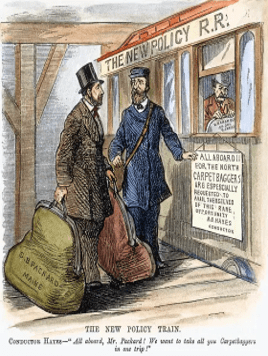Download Carpetbaggers & Scalawags in the Reconstruction Worksheets
Do you want to save dozens of hours in time? Get your evenings and weekends back? Be able to teach Carpetbaggers & Scalawags in the Reconstruction to your students?
Our worksheet bundle includes a fact file and printable worksheets and student activities. Perfect for both the classroom and homeschooling!
Table of Contents
Add a header to begin generating the table of contents
Summary
- Who were the carpetbaggers and the scalawags?
- What is the origin of the words carpetbaggers and scalawags?
- What were their roles in the Reconstruction?
Key Facts And Information
Let’s know more about the Carpetbaggers & Scalawags in the Reconstruction!
- During the period of the Reconstruction, there were two terms used as criticism by white Southerners who were opposed to the idea of providing equal rights to the blacks. These two terms were “carpetbagger” and “scalawag”.
- Although both words were deemed to be pejorative, they have different meanings. Persons travelling from the North to the South after the Civil War to help the blacks and profit from the Reconstruction were called carpetbaggers. The white Southerners working with the northern Republicans during the Reconstruction were called Scalawags.
Introduction
- Carpetbaggers arrived in the South during and after the Civil War.
- The move was based on speculative and commercial opportunities as a result of the Reconstruction, but also on a desire to help the South, and particularly the blacks, during the Reconstruction.
- Other Southerners supported the Republican government, convinced that the simplest way to bring the Reconstruction to an end was through the proper implementation of the Reconstruction Acts.
- They were called scalawags (sometimes spelled scallywag).
- Both the scalawags and the carpetbaggers were criticised by Southerners for their stance during the period.
The Reconstruction
- Following the assassination of Abraham Lincoln at the end of the Civil War in 1865, Lincoln’s successor, Andrew Johnson, proposed reconstruction policies.
- The policies offered by Johnson affirmed his belief in the principle of unionism, citing that the war did not relinquish the right of Southern states to govern themselves.
- The Southern states were given a free hand over their affairs, and as a result, many passed the Black Codes from 1865 to 1866 that undermined the liberty of the freed blacks.
- The Southerners were required to pay off the war debts, observe the Thirteenth Amendment (which banned slavery and involuntary servitude), and swear loyalty to the Union.
- The oppressive Black Codes angered a lot of the Northerners, especially Congress.
- In early 1866, Congress passed the Freedmen’s Bureau and the Civil Rights bill for Johnson’s assent.
- The Freedmen bill was meant to extend the tenure of the bureau that had been established as a temporary organ through earlier legislation.
- The Civil Rights bill sought to provide for equality among all persons born in the United States, including African-Americans.
- Johnson vetoed the bills, causing a permanent rift between himself and Congress.
- Congress took firm control over the Reconstruction by passing the Reconstruction Act of 1867 against Johnson’s position on the issue.
- The Act divided the South into districts under military rule.
- The states were also required to ratify the Fourteenth Amendment in 1868 which granted citizenship rights and equal protection of former slaves.
- Congress also ratified the Fifteenth Amendment in 1870 that provided constitutional protection of the right to vote for former slaves.
- The Southern governments established by the South during the Reconstruction included African-Americans, the so-called carpetbaggers and the scalawags, who took control of the region.
- The law also provided for the reestablishment of Southern governments on the principle of universal male suffrage.
The Carpetbaggers
- The carpetbaggers were Northerners who arrived in the South with their belongings packed in large carpet bags or satchels, which is where they got their name from.
- The majority of the carpetbaggers were initially union soldiers or employees of the Freedmen’s Bureau while others were teachers, merchants and journalists.
- They took part in the Reconstruction of the South, together with the African-Americans and the scalawags.
- They purchased land, took out leases, or entered into partnerships with the struggling plantation owners in a bid to profit from cotton.
- At first, they were welcomed, as Southerners appreciated the Northern capital and investment in their region.
- Later, they were the object of ridicule and scorn as many Southerners began to see them as low-class opportunistic newcomers who were attempting to benefit from the misfortune of the war.
- Other carpetbaggers saw themselves as reformers who wanted to influence the South to become like the North, which the majority perceived to be more progressive.
- However, some carpetbaggers were corrupt opportunists seeking to benefit from the war as claimed by the Southerners.
The Scalawags
- Scalawag was a demeaning reference to the Republican-supporting white Southerners.
- Originally, the term was used to refer to livestock with little value but later it came to refer to persons thought of as worthless.
- They attended radical Reconstruction-era legislatures as delegates.
- There were established plantation owners in the South, who stood against the Confederacy and were vocal in support of the civil rights of African-Americans.
- The majority were former Whig conservatives who saw the Republican party as a successor of the Whig party.
- They were non-slave-owning farmers, merchants and artisans who maintained loyalty to the Union during the Civil War.
- In the antebellum years, many were Congressmen, judges and local officials.
- The scalawags were thought to be traitors and therefore were held in more disdain than the carpetbaggers.
- They had diverse backgrounds and motives, but all agreed that the Reconstruction Acts were progressive and beneficial to the South.
- They were united with the carpetbaggers and African-Americans for political expediency.
Image sources:

